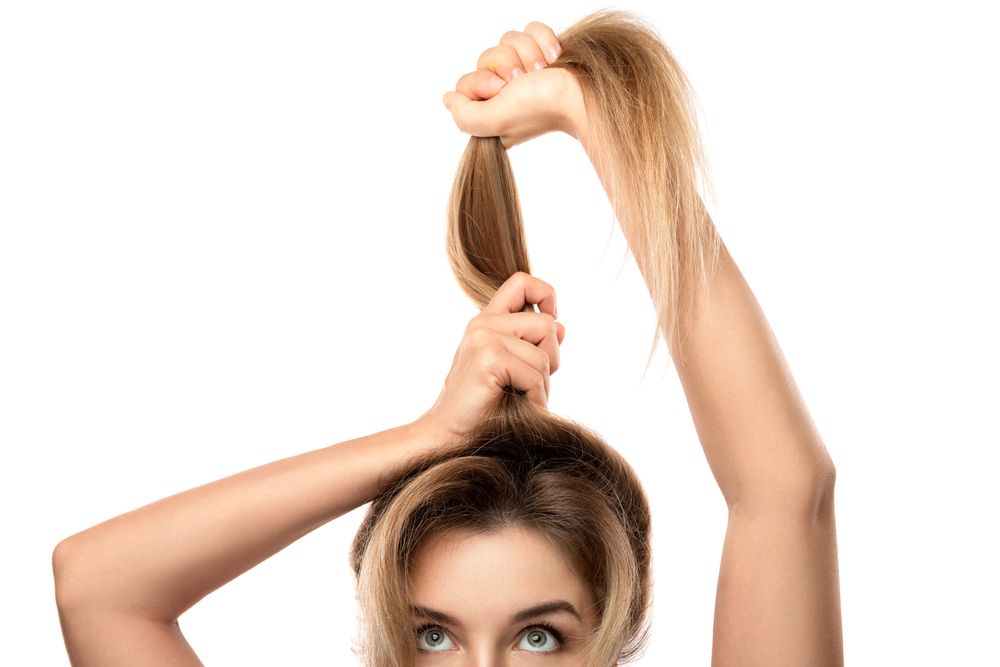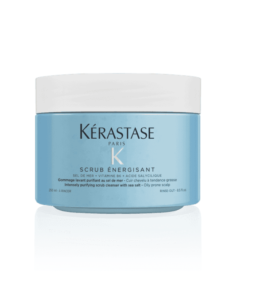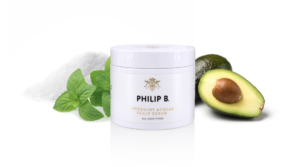Who really Needs a Scalp Peel?

They seem to be becoming the latest trend product in hair care. Almost weekly new ones come onto the market. Another clever marketing move? Or really a must for beautiful hair? I am a bit confused. With a feeling of dryness and dandruff, I personally still see a certain sense in it, but does a healthy scalp really need to be peeled regularly?
Peelings are sufficiently known for face and body. Through gentle rubbing, dead skin flakes are dissolved and blood circulation is stimulated. The effects on the scalp should be exactly the same: deep cleansing, increased blood circulation and supply of care ingredients. Why deep cleaning? Isn’t a shampoo enough? The answer: Not always, because dirt and dead cells accumulate on the scalp, as well as residues of styling products. Together with silicone from shampoos and other care, they can cause so-called build-ups on the base and hair. They weigh the hair and flatten it. Scrubs dissolve such build-ups. The effect: The pores of the scalp can breathe again and active ingredients can be absorbed better. In addition, the treatment is equivalent to a gentle massage that stimulates blood circulation. Just like the scalp massage at the hairdresser. What happens is that the fresh blood, rich in oxygen and nutrients, reaches the hair roots and thus supports growth. The scrubs contain additional active ingredients, such as anti-inflammatory substances such as tea tree oil, which are adapted to the needs of an irritated scalp. Minerals such as alumina provide the hair roots with nutrients. Avocado oil or apple extracts moisturize and are intended to regulate the production of the sebaceous glands. This, in turn, means that the hairline re-grease less quickly. However, the actual peeling effect is achieved by fine grains of sand, sugar and sea salt. Exfoliating shampoos, such as those found in anti-dandruff hair care, contain increasingly enzymes instead of solid grains. We know these from facial care, where enzymes are often combined with salicylic acid. But does a healthy scalp actually benefit from regular peelings? We asked the L’Oreal hair expert Stefan M. Pauli:
Do I need to buy for myself a scalp peeling right now?
It is definitely a problem-solving product. However, If you have no problems and don’t over-style your hair, you should prefer a good shampoo and a cure or serum if you want to do something good for your scalp.
Does peeling help with dry scalp or dandruff?
It helps a really stressed scalp with dandruff. The peeling grains go between the hairs and detach what has accumulated there. With a normal shampoo, this doesn’t always work. But: With scaly scalp, this is free of all residues after exfoliation, but not regulated. Therefore, then use a product that soothes them.
And what about an oily scalp?
It experiences the greatest benefit. If you do not clean an oily scalp intensively and only wash with shampoo, residues of sebum can be left. In this case the mechanical effect of a peeling is great. This also affects the hair, they are lighter and airier. The optical increase in volume is due to the fact that the hairs rise up again at the roots. Deposits on the scalp can clink the follicle.
Grains or enzymes – what is more effective?
Personally, I find enzyme peelings more pleasant, which dissolve during use. You don’t have to wash too much to get the crumbs out of your hair. If grains are contained they at least should be loosened with a corresponding shampoo that is hair-type and scalp-friendly.
Can I peel after a coloration?
After a color treatment rather not, because hair and scalp are already irritated anyway. Even though a re-structure treatment in the salon has already been used, the hairs are still porous. Depending on the hair condition and type of colour treatment (partial colour, bleaching) you should wait at least 2-4 days. By exfoliating too early, you can also lose beautiful color reflections.
Who are scalp peels not suitable for at all?
Definitely for a sensitive scalp that is already sensitive to touch. It does not tolerate coarse-grained peeling. This also applies to psoriasis or eczema of the scalp. The irritation of a mechanical peeling would be too intense. Better to use something that relieves scalp problems. In extreme cases, ask the dermatologist.
How to use a peeling correctly?
Moisten the hair slightly. Put a little of the product on the back of the hand and pat it up in parts. Continue first on the sides, then up to the crown and back to the neck. Do not use too much of the peeling, because it has to be washed out again. Less is more here. And gently massage in, do not rub wildly.
How often should you use it?
Many products recommend one or more times a week. I would say all 3-4 hair washes is enough. You really should only use it if you want to work something away. Otherwise, you achieve the opposite and induce an irritated scalp.
And what exactly is a peeling shampoo for?
This is exfoliating and shampoo in one. The peeling grains are included in the shampoo. First, gently work into the scalp with little water, then add more water. The now dissolved grains become a foaming shampoo. Modern dandruff shampoos now mostly act enzymatically without solid particles. Afterwards, a serum is also recommended to regulate the scalp.
Lead photo: blacklady@shutterstock

CultureAndCream Author from Munich
To travel during my profession as a beauty journalist was never enough for my. Also my six month on a world trip didn’t do it. It always attracts me to other cities, foreign countries, on roadtrips and places I don’t know yet. But I am not only interested in “culture” and “cream”, I am also fascinated by people who have stories to tell . Such unique experiences I want to share with you.

